Rane SP 13 Handleiding
Rane
Niet gecategoriseerd
SP 13
Bekijk gratis de handleiding van Rane SP 13 (4 pagina’s), behorend tot de categorie Niet gecategoriseerd. Deze gids werd als nuttig beoordeeld door 13 mensen en kreeg gemiddeld 4.7 sterren uit 7 reviews. Heb je een vraag over Rane SP 13 of wil je andere gebruikers van dit product iets vragen? Stel een vraag
Pagina 1/4

Manual-1
OPERATORS MANUAL SP 13
STICK PREAMP
QUICK START
The SP 13 accommodates the signals from two pickups from a Stick® instrument, where the pickups are wired to the
tip and ring of a standard stereo ¼" TRS (Tip, Ring, Sleeve) plug. You do not need internal preamps when using the SP 13.
1. Slide the Input Wiring switch to the correct position agreeing with your pickup wiring situation.
2. Turn the MAIN OUT LEVEL controls down.
3. Connect the SP 13 to your amplifier using the ¼" MAIN OUTPUTS or use the HEADPHONE jack.
4. Initially, turn the A and B INSTRUMENT GAIN TRIM controls half way up.
6. Move each LOW CUT slider to the top (15 Hz); center all EQ sliders; center the PAN sliders; leave the INVERT
pushbuttons out; and position the LEVEL sliders to “4”
7. Plug in the instrument to the INPUT jack on the front of the SP 13 with a stereo ¼" TRS cable.
8. Power up the SP 13, then turn on your amplifier.
9. Play your instrument and slowly turn up the MAIN OUT LEVEL controls. You should hear sound from your speakers.
If not, recheck all settings and wiring, and read the next few pages.
Never connnect anything except an approved Rane power supply to the red thing that looks like a telephone jack on the
rear of the unit. This is an AC input and requires special attention if you do not have a power supply exactly like the one
originally packed with your unit. See the full explanation of the power supply requirements elsewhere in this manual.
WEAR PARTS: This product contains no wear parts.

Manual-2
FRONT PANEL DESCRIPTION
Stick® INSTRUMENT INPUT: is a stereo ¼" TRS (Tip-Ring-Sleeve) INPUT jack for use with a Stick instrument with
two pickups; Use a balanced or stereo ¼" shielded cable to connect your instrument to this Input. However, this also accepts
a mono input. When using a mono cable, signal is routed to the TIP selected by the Input Wiring Switch (see ).
A & B Input OVERLOAD indicators: are useful in monitoring pickup level and initially in setting PICKUP GAIN TRIM
controls. These indicators light approximately 4 dB before actual clipping, so occasional flickering is okay, but they should
never be allowed to light steadily.
Input wiring switch: allows choice of Input wiring. Either TIP=A and RING=B, or vice-versa.
Input INSTRUMENT GAIN trims: set the proper Gain for each pickup. Range is from 6 dB minimum to 60 dB maxi-
mum.
INVERT switches: Invert the polarity (phase) of the A pickup with respect to the B pickup. Either A or B PICKUPS may
be individually Inverted.
LOW CUT frequency: adjusts the corner frequency of the LOW CUT (high-pass) filter from 15 Hz to 250 Hz. Use to
reduce unwanted low frequencies in either A or B Pickups.
7-band graphic equalizer boost/cut controls: set the amount of boost/cut for each of the indicated bands in both Pickups
A and B. A grounded center detent guarantees flat response for filters not used.
PICKUP A OUT control: adjusts the level of the AUX OUTPUT jack. This Output is independent of the LEVEL and
MAIN OUT LEVEL controls.
PAN controls: for both PICKUPS A and B allow signal routing anywhere between MAIN OUT A and B.
LEVEL controls: for both PICKUPS A and B set the overall Level of each signal.
SEND A/B controls: adjust the amount of signal at each of the SEND jacks (to external signal processing).
RETURN control: is a “stereo” Return. Controls the amount of A and B entering the RETURN jacks.
MAIN OUT MUTE button: cuts off the signal to both A and B Main Outputs. Does not affect the Headphone Output. The
red LED indicates Muted Output.
MAIN OUT A & B LEVELS: are concentric controls used to separately set the Main A & B Output Levels.
MAIN OUT OVERLOAD indicator: monitors both A and B Main Outputs. An overload condition (within 4 dB of
clipping) on either Output causes this red indicator to light.
HEADPHONE LEVEL: controls the volume of the HEADPHONE Output jack.
POWER indicator: glows yellow when the proper power supply is connected and powered.
Headphone jack: Accepts standard stereo headphones rated from 32-600 ohms equipped with a ¼" TRS plug.

Manual-3
REAR PANEL DESCRIPTION
MAIN OUTPUTS—MIC-level: Two XLR connectors used as a direct feed to mixing console mic inputs. Pin 2 is “+”
positive, pin 3 is “–” negative, and pin 1 is signal ground.
MAIN OUTPUTS—LINE-level: Two ¼" TRS (Tip-Ring-Sleeve) connectors deliver the Main A & B Line Level Outputs.
No surprises here: the tip is “+” positive, the ring is “–” negative and the sleeve is signal ground.
MAIN OUTPUTS MONO button: Engaging this pushbutton combines (or Monoes) the Main A & B Output.
EXPAND IN A & B jacks: Two unbalanced ¼" TS jacks used to expand the SP 13. These Inputs sum (pre-Main Level
control) with the Main A & B signals. Mono expansion is done using only the EXPAND IN A jack. As long as nothing is
plugged into the B jack, the signal from EXPAND A automatically drives EXPAND B. These jacks also provide an auxiliary
input path from another mixer, instrument, tape, etc.
INSERT loop A & B jacks: Two unbalanced ¼" TRS jacks wired per the tip=send, ring=return convention. Allows placing
an outboard signal processor in series with the main signal paths.
RETURN A & B jacks: Two unbalanced ¼" TS jacks used as the return path from the OUTPUTS of an outboard signal
processor. Mono signals use only the RETURN A jack. As long as nothing is plugged into the B jack, the signal from
RETURN A automatically drives RETURN B.
SEND A & B jacks: Two unbalanced ¼" TS jacks are used to connect to the inputs of an outboard signal processor. Mono
effects units should wire only to the SEND A jack.
AUX OUTPUT: An unbalanced ¼" TS jack gives a direct dry Output signal from the A Pickup only. The PICKUP A OUT
slider controls the amount of signal.
TUNER OUTPUT: An unbalanced ¼" TS jack used for tuner connection, fed by both pickups. Located post EQ but pre-
LEVEL, this Output is unaffected by either the LEVEL or OUT controls. For convenience, the tuner may be left connected
during performances.
Ground lift switch: provides the ability to separate chassis ground and signal ground. Normally, this switch should be in
the “grounded” position. In some circumstances, moving it to the opposite position eliminates hum and buzz problems.
Remote power supply input: This unit is supplied with an RS 1 Remote AC Power Supply (RAP) suitable for connection
to this input jack. The power requirements call for an 18 VAC center-tapped transformer. This is not a telephone jack. Never
use a power supply other that the one supplied or a replacement approved by Rane. Using any other type of supply may
damage the unit and void the warranty.
Chassis grounding screw: A #6-32 screw is used for chassis grounding purposes. See CHASSIS GROUNDING below.
CHASSIS GROUNDING NOTE
If after hooking up your system it exhibits excessive hum or buzzing, there is an incompatibility in the grounding
configuration between units somewhere. Here are some things to try:
1. Try combinations of lifting grounds on units that are supplied with ground lift switches or links.
2. If your equipment is in a rack, verify that all chassis are tied to a good earth ground, either through the line cord
grounding pin or the rack screws to another grounded chassis.
3. Units with outboard power supplies do not ground their chassis through the line cord. Make sure that these units are
grounded either to another chassis which is earth grounded (such as the amplifier), or directly to the grounding screw on an
AC outlet cover.
Please refer to RaneNote 110, “Sound System Interconection” (included with this manual) for further information on
system grounding.
Product specificaties
| Merk: | Rane |
| Categorie: | Niet gecategoriseerd |
| Model: | SP 13 |
Heb je hulp nodig?
Als je hulp nodig hebt met Rane SP 13 stel dan hieronder een vraag en andere gebruikers zullen je antwoorden
Handleiding Niet gecategoriseerd Rane
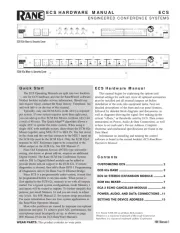
4 Juli 2025
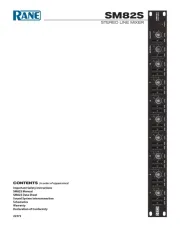
4 Juli 2025

2 Juli 2025
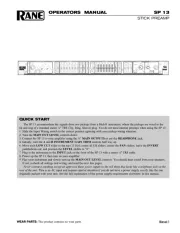
1 Juli 2025
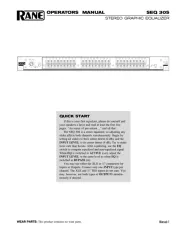
1 Juli 2025
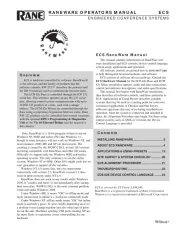
1 Juli 2025
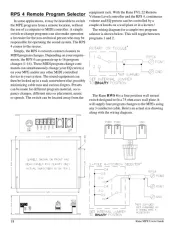
1 Juli 2025
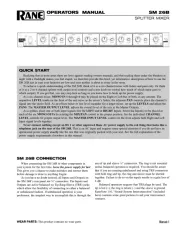
30 Juni 2025
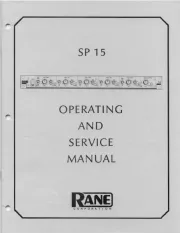
30 Juni 2025
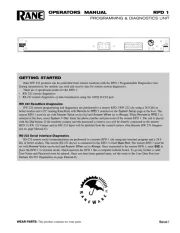
30 Juni 2025
Handleiding Niet gecategoriseerd
- Dwarf Connection
- Dutchbone
- The T.mix
- Tvilum
- Powerblade
- Progress Lighting
- Orei
- Ibm
- LVSUN
- Finnlo
- Platinum Tools
- Lockwood
- Microair
- Teslong
- Kindermann
Nieuwste handleidingen voor Niet gecategoriseerd
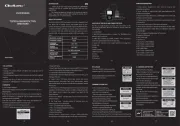
13 September 2025
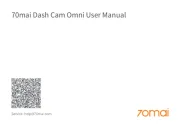
13 September 2025

13 September 2025

13 September 2025
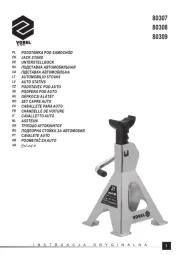
13 September 2025
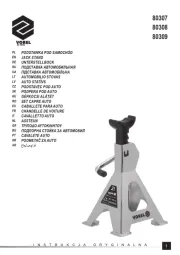
13 September 2025
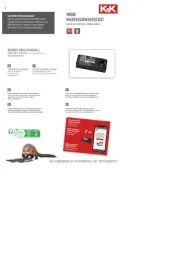
13 September 2025

13 September 2025

13 September 2025
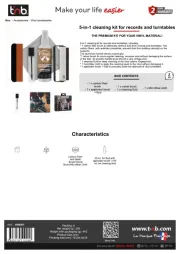
13 September 2025